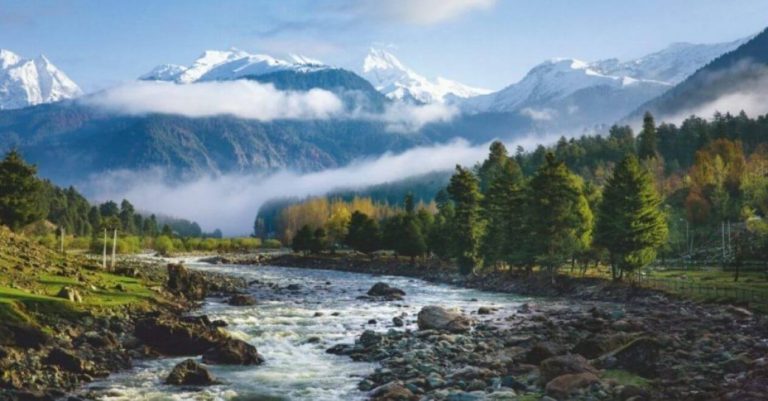Baku, the capital of Azerbaijan; Yerevan, the capital of Armenia; and Tbilisi, the capital of Georgia, are three iconic cities located in the Southern Caucasus region. Despite their relative proximity to one another, each city has developed its own unique culture and character over the centuries. In this comparative analysis, we take a deeper look at how Baku, Yerevan and Tbilisi compare across a variety of metrics including architecture, infrastructure, water quality, air quality, society, safety, technology and more.
Architecture Showcases Each City’s Rich History
All three cities boast impressive architectural feats that reflect their long and intertwined histories. Baku, situated along the Caspian Sea, is home to medieval walled cities, towering skyscrapers and the elegant historical architecture of Old City. Yerevan, nestled at the base of volcanic mountains, features beautifully preserved churches, cathedrals and government buildings in a European style. Tbilisi, known as the “City of Saltwaters,” incorporates Neoclassical facades and elegant balconies into its hilly landscape alongside ancient sulfur baths and fortified churches. While Baku’s modern skyline is imposing, the finest architectural works highlight Yerevan and Tbilisi’s enduring historical landmarks.

Infrastructure Developments Leave Room for Improvement
Public transportation infrastructure has advanced significantly in all three capitals, with expanding metro systems now connecting most areas of each sprawling city. However, European standards have yet to be achieved in other sectors. Road conditions, trash collection and general cleanliness vary widely between neighborhoods in Baku, Yerevan and Tbilisi due to inconsistent maintenance. Reliable high-speed internet access has become standard, yet advances in transportation, utility and civil engineering projects would boost quality of life. Significant investments continue as each city strives for modern, sustainable infrastructure on par with global peers.
Natural Resources Shape Local Environments
Access to clean water and air quality differ noticeably between the three cityscapes. Yerevan enjoys plentiful supplies of fresh mountain spring water distributed throughout the city via public fountains and taps. Baku relies on treated local supplies, while Tbilisi grapples with periodic shortages. Air pollution arises as a challenge, especially in capital city traffic. However, Baku benefits substantially from coastal sea breezes which disperse contaminants, unlike landlocked Yerevan suffering seasonal inversion. Tbilisi’s hilly topography aids air flow. Overall, each locale’s distinctive geographic attributes and natural water resources shape liveability factors.
Diverse Societies Forged by Shared Histories
Citizens of Baku, Yerevan and Tbilisi exhibit the profound influences of empires past upon the present-day cultural mosaic. The Russian imprint endures strongest in Tbilisi, evident through customary social norms and linguistic ties. Meanwhile Yerevan evolved as a hub promoting Armenian heritage worldwide. Baku navigates a complex multiethnic environment, historically welcoming diverse minorities. Current conditions vary considerably - Yerevan enjoys stable good governance supporting free expression, whereas sociopolitical restrictions curb open debate within autocratic Azerbaijan. Nonetheless, traditions of hospitality endure across the region, upheld by proud people of diverse ethnic backgrounds.
Cities Balance Safety with Geopolitical Realities
Overall security compares favorably to large Western urban areas. Violent crime remains rare. Nevertheless, unresolved conflicts shape prevailing atmospheres. Open discussion of sensitive subjects like the Armenia-Azerbaijan Nagorno-Karabakh conflict proves ill-advised in Baku. Geopolitical divisions exact no toll in cosmopolitan Yerevan though. There, locals and visitors alike wander day and night without concern - a marked difference. Tbilisi grapples to balance historically amicable ties with its volatile northern neighbors against internal stability demands. Each capital thus navigates a distinct balance between ensuring safety and confronting complex geopolitical legacies.
Economic Fortunes Diverge Despite Shared Starting Points
Once partners within the Soviet scientific and industrial system, Baku, Yerevan and Tbilisi now experience greatly divergent economic trajectories. Oil wealth transformed Baku into a regional powerhouse, with ambitious construction projects visible everywhere. Yet reliance on extractive industries breeds dependence. By contrast, Yerevan emerged as a resilient, innovation-focused hub anchoring Armenia’s recovery through technologies like artificial intelligence and biomedical research. Tbilisi strikes a balance, actively courting foreign investment while boosting tourism. Disparate resource endowments coupled with good or deficient governance dictate each city’s capacity to convert post-Soviet potential into sustainable prosperity.
Final Analysis: Distinct Yet Interconnected Destinations
In conclusion, Baku, Yerevan and Tbilisi showcase diverse outcomes from shared historical roots in the Caucasus. Each merits appreciation for its uniqueness - Baku’s modern energy and architectural feats, Yerevan’s warmth and cultural vibrancy, Tbilisi’s natural beauty and heritage sites. At the same time, transnational realities like infrastructure, environment and regional politics connect their fates. A visit to one city warrants exploring the others to gain full perspective on a strategically important yet commonly misunderstood region. While development trajectories differ, these three proud capitals remain profoundly interconnected through both the challenges and achievements of their intertwining pasts.

 Planning a Road Trip from Jammu to Pahalgam in Kashmir
Planning a Road Trip from Jammu to Pahalgam in Kashmir